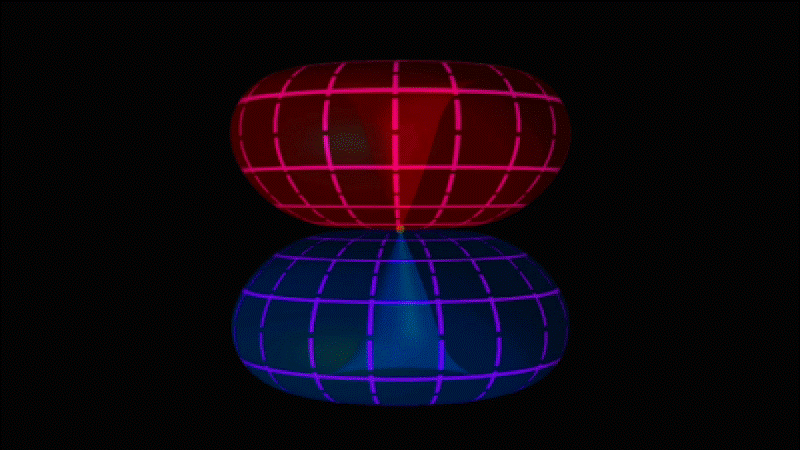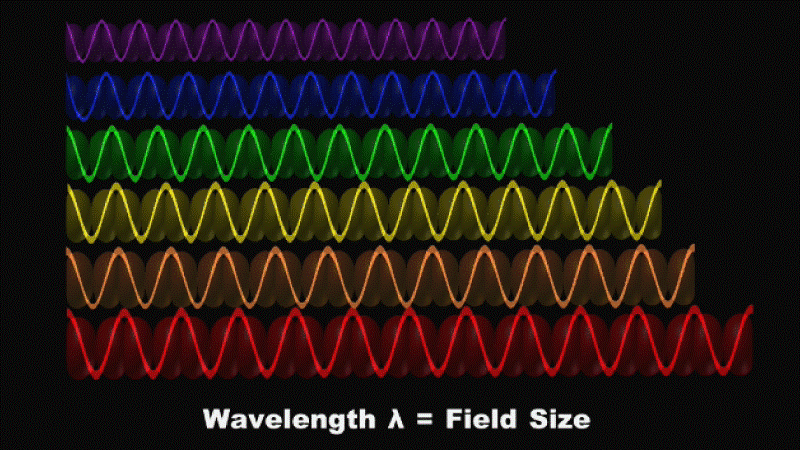Waveforms Explained
This animation shows the magnetic fields rotating so that you can get a better idea of their structure in nature. The naturally occurring magnetic fields have a slightly different shape than our human-built magnetic arrays, but their function is the same.
The magnetic fields around the green photon are one wavelength in length as shown in this diagram and the photon is at the crossover point between the electric field waveform and the magnetic field waveform. Where ever there are photons there are fields that confine and energize them. Notice the end view of the rotating fields and the green energy flowing back to the photon itself. This recirculating energy flow keeps the photon emitting light. When that energy flow stops circulating within a photons fields, it goes dark.







